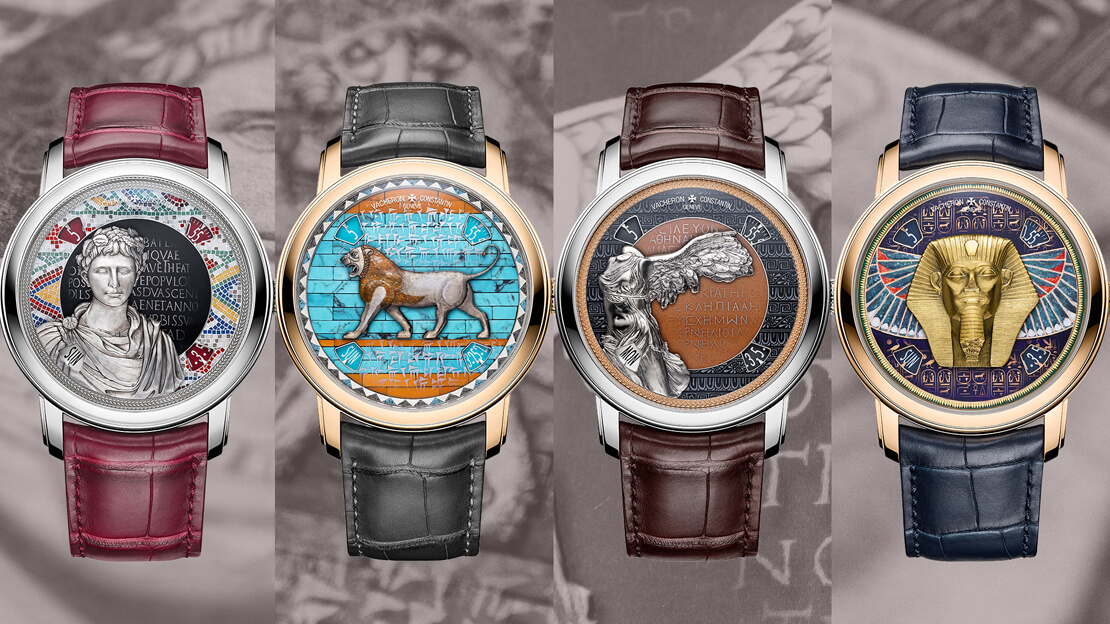Indeed, Vacheron Constantin’s Métiers d’Art department is in a class of its own with the manufacture’s veritable in-house army of master craftsmen producing genuine works of wearable art. The brand has, in fact, perpetuated these traditional and often rare skills and often used them to create one-of-a-kind horological masterpieces.
Which is why when it was announced that Vacheron Constantin was joining forces with the Louvre in 2019 it was such a no-brainer there were many who asked why the two didn’t simply partner up to begin with. Whatever the case, it was the beginning of an artistic and cultural enterprise and it opened the door for both institutions to further showcase their greatest assets both artistically and historically.
Both watchmaker and museum, in fact, share a concern for conservation, restoration and archiving, with the promise of perpetuating the related arts and crafts of whatever they were showcasing. This shared attachment to the past and the transmission of its knowledge has already paved the way for several joint initiatives by the two partners. Vacheron Constantin, for example, supported the restoration of the clock named La Création du Monde, a masterpiece of 18th century precision horology presented to King Louis XV in 1754.
Then there was the “Bid for the Louvre,” which made headlines in 2020 when it was announced that a special lot in a Christie’s sale comprising Les Cabinotiers pièce-unique (a single-piece edition) would be awarded to a winning bidder who would then be allowed to commission a special Vacheron Constantin timepiece based on any masterpiece from the Louvre collection. The winner would get a private tour of the world’s largest museum by a senior expert who would help curate the piece before working closely with the Métiers d’Art craftsmen to create the watch.
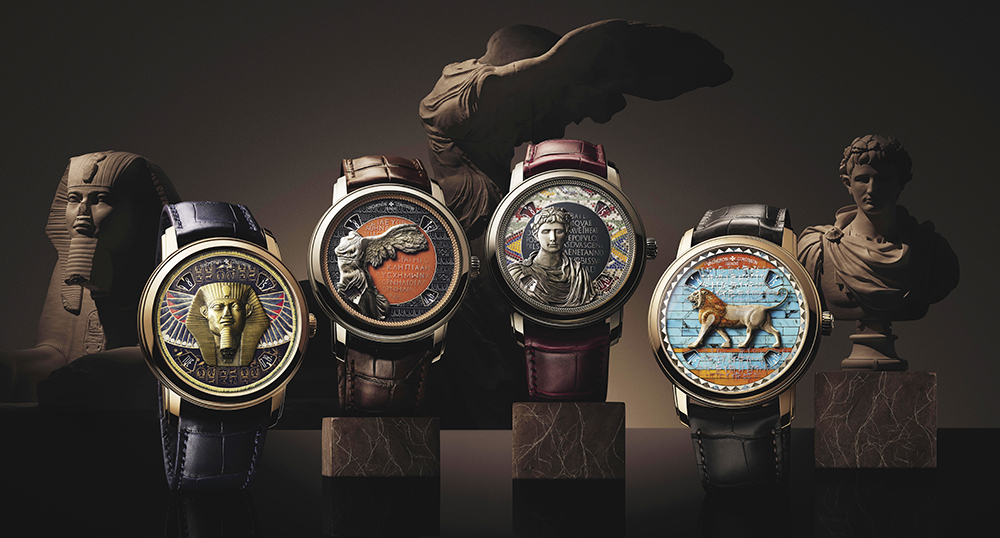
This year, Vacheron Constantin’s Métiers d’Art collection once again invites us to travel through time and space with a new series of four watches that allows us to revisit some of the most important chapters in antiquity. More specifically the Métiers d’Art – Tribute to great civilizations is directly inspired by some of the most emblematic masterpieces of the Louvre with each watch taking inspiration from a specific era in ancient history.
Best of all, since the timepieces are an artistic and cultural symbol of these eras, each timepiece will feature ornamentation lifted directly from the decorative arts of the corresponding period. These are further embellished with written elements, and the choice of techniques, the rare talents required to implement them, as well as the original composition of these timepieces guarantees something truly unique in horology and offers a genuine link to the greatest civilizations our world has ever known.
Indeed, the four ancient civilizations selected were the ones that had the most significant impact to civilization, as we know it today. These civilizations gave us writing, democracy, philosophical thought, monumental architecture and incomparable artistic achievements. In fact, our language originated from them; our customs were influenced by them; and our political organizations, as well as our vision of the world in general is inspired by them.
These ancient civilizations are the Persian Empire under Darius the Great; the Egypt of the pharaohs from the time of the Middle Kingdom; the Hellenistic period in Greece; and the birth of the Roman Empire with the advent of Augustus, the selection of which was based on four main themes encompassing as many great periods and ancient civilizations as possible. Thanks to the richness and originality of the themes, it was almost impossible for the four timepieces representing them not to be of remarkable quality and execution.
Indeed, each of these great civilizations is represented by a major artistic work drawn from some of the Louvre’s masterpieces including Roman mosaics; a painted Egyptian coffin; painted or bas-relief sculpted Greek ceramics and vases; and a frieze of Babylonian-inspired bricks with colored glazes. A sapphire crystal bearing a sculpted gold applique depicting one of the four major works of ancient period art is then placed on the dial. This same slightly smoked crystal is also engraved using metallization with texts in cuneiform, hieroglyphic, ancient Greek and Latin script, depending on the model.
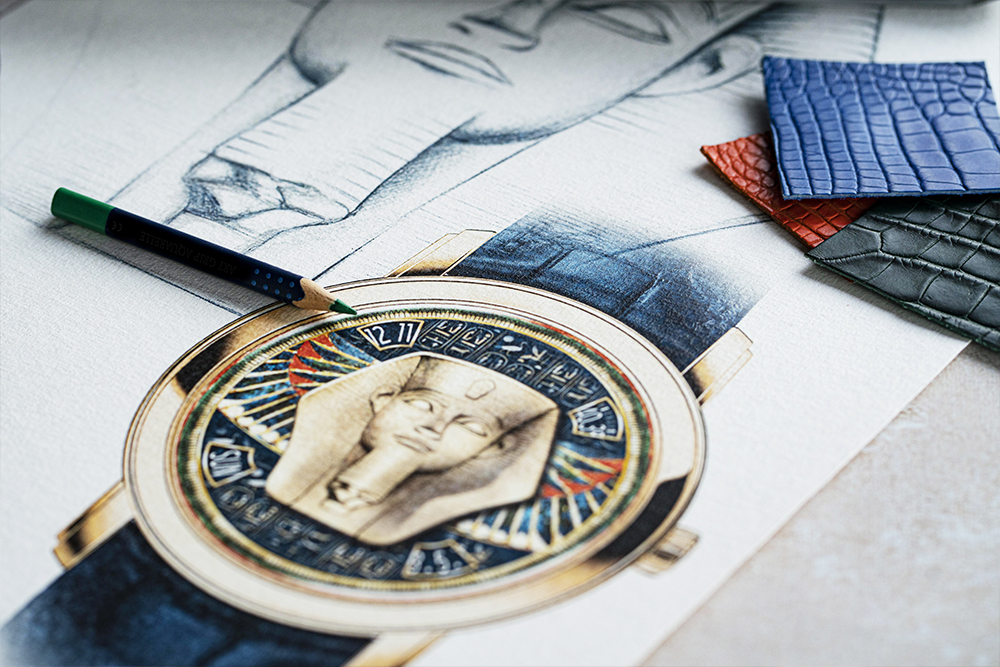
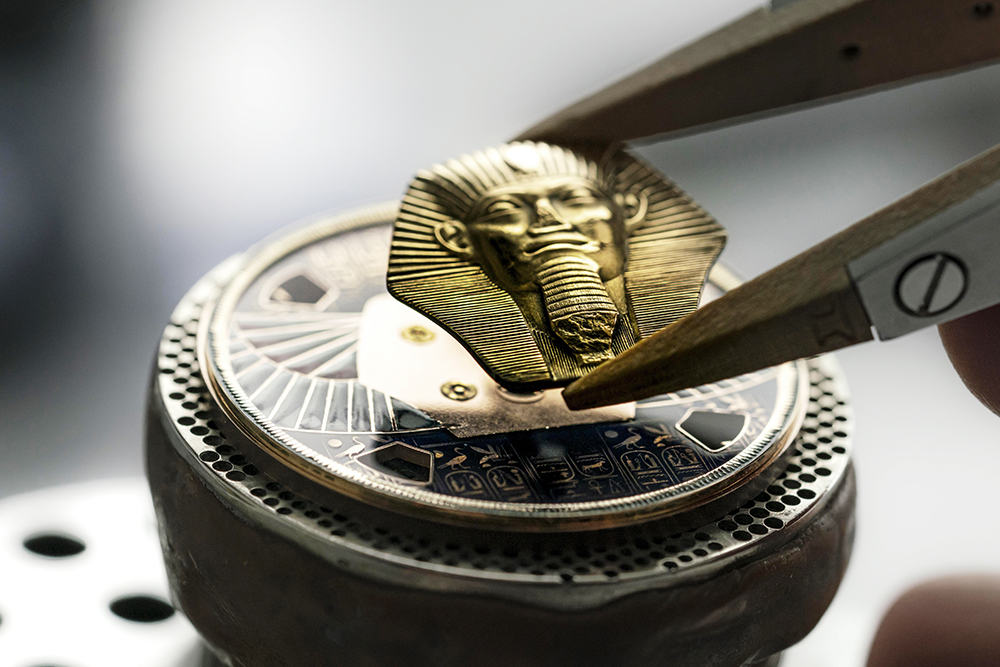
The Grand Sphinx de Tanis watch for example features an enamel dial with a mixture of deep blue and black enamels obtained after six firings in a kiln, the decorative dial elements of which are inspired by the necklace depicted on the cartonnage coffin of Nakht-khonsou-irou. An engraving made of carved gold applique of the head of the sphinx takes pride of place, while under it, a winged hawk with a ram’s head appears and the plumage of its wings is picked up on the dial – again in champlevé enamel. The last cultural component is the sapphire crystal bearing the gold applique engraved by metallization with hieroglyphic inscriptions from the cartouche of the pharaoh Menenptah.
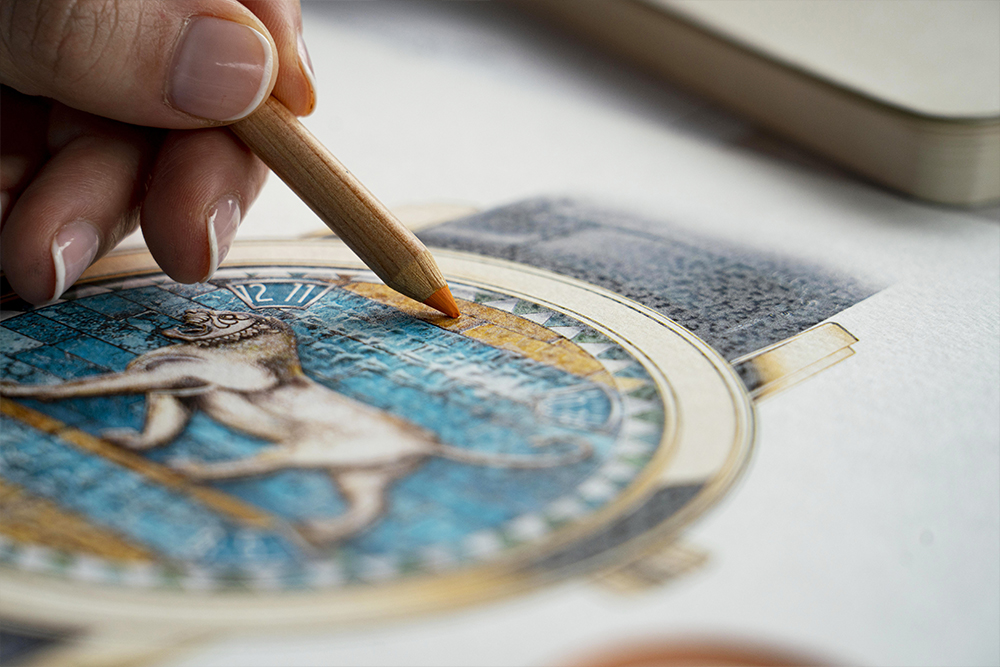
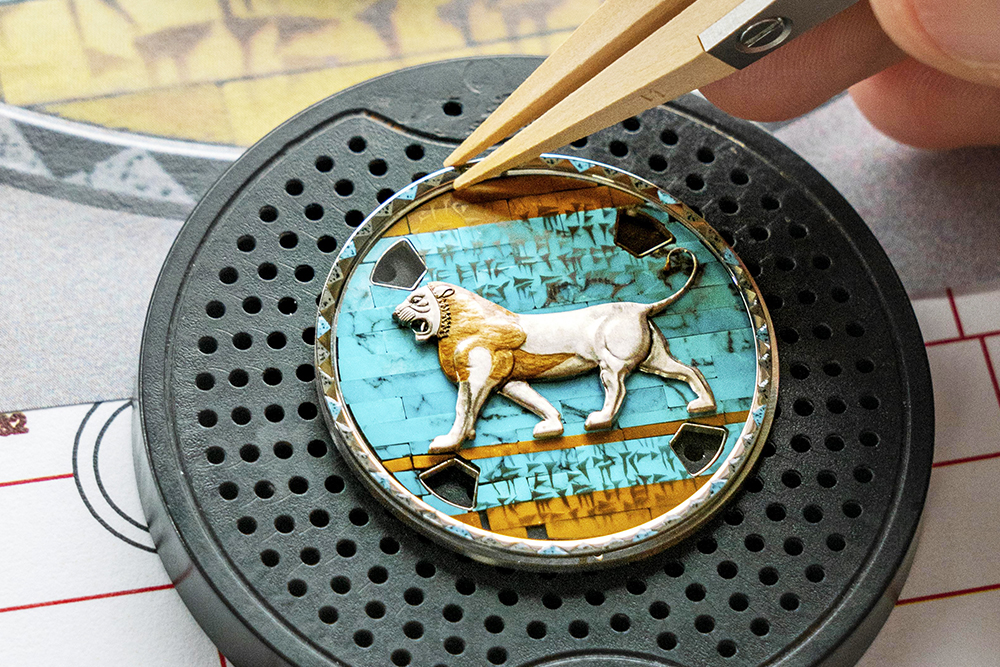
The Lion de Darius watch features an engraved metal & champlevé enamel frieze of a lion frieze, an important figure in Persian iconography found in the Palace of Darius in Susa. Its background is a decoration of glazed bricks affixed to a wall depicted by astonishing stone marquetry by the artisans. Further, the frieze surrounding the dial was inspired by the decoration of another well-known work from the Palace of Darius: the Frieze of Archers. This ornamentation, consisting of a juxtaposition of triangles, is made of engraved metal and champlevé enamel. The writing elements engraved by metallization on the sapphire crystal, on the other hand, are taken from a tablet inscribed in Old Persian. Indeed, this text in cuneiform script is one of the first written by Darius upon his arrival in power.
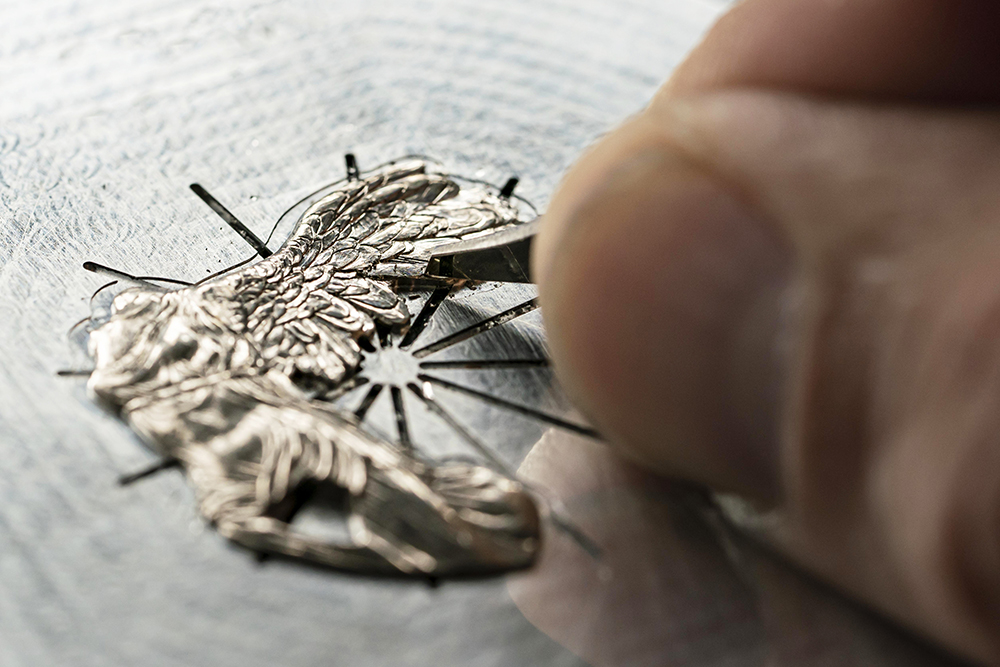
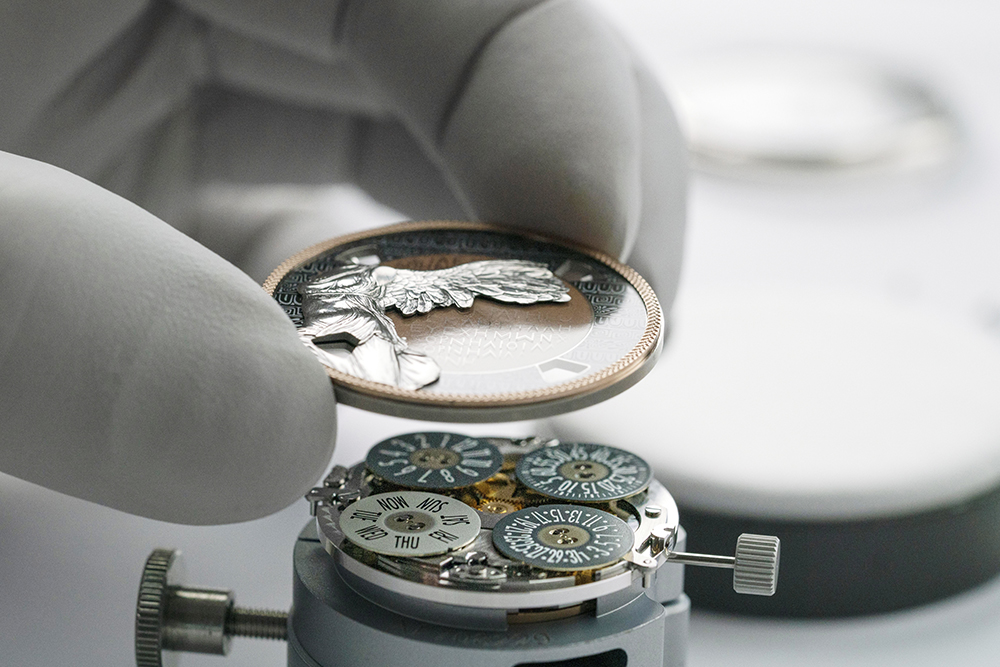
Then there is the statue of Victory, which is a winged goddess resting on the prow of a Greek warship, an applied depiction of which features prominently on the Victoire de Samothrace watch. Indeed, the drapery of the statue, ruffled by the wind with a large flow of fabric falling in deep folds between the legs, represented a particular challenge to the engraver charged to reproduce all of its subtleties.
The dial itself is enamelled in brown, a very difficult color to achieve and required the use of rare enamels no long in production, as well as six firings in a kiln. The periphery features grisaille enamelling depicting the decorative friezes taken from two Greek vases and is surrounded by a gold frieze adorned using the line engraving technique, inspired by that of the Vase of Pergamon, a first century BC masterpiece of marble sculpted in bas-relief. Last but not least, the ancient Greek script engraved by metallization on the sapphire crystal is a dedication to the Great Gods of Samothrace discovered in the Temple of Samothrace.
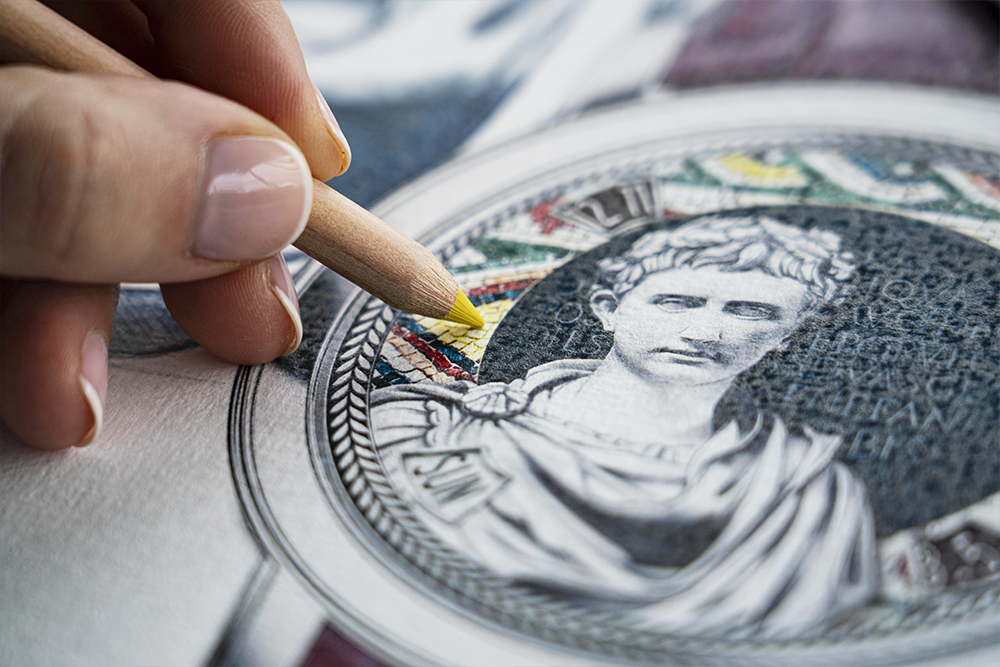
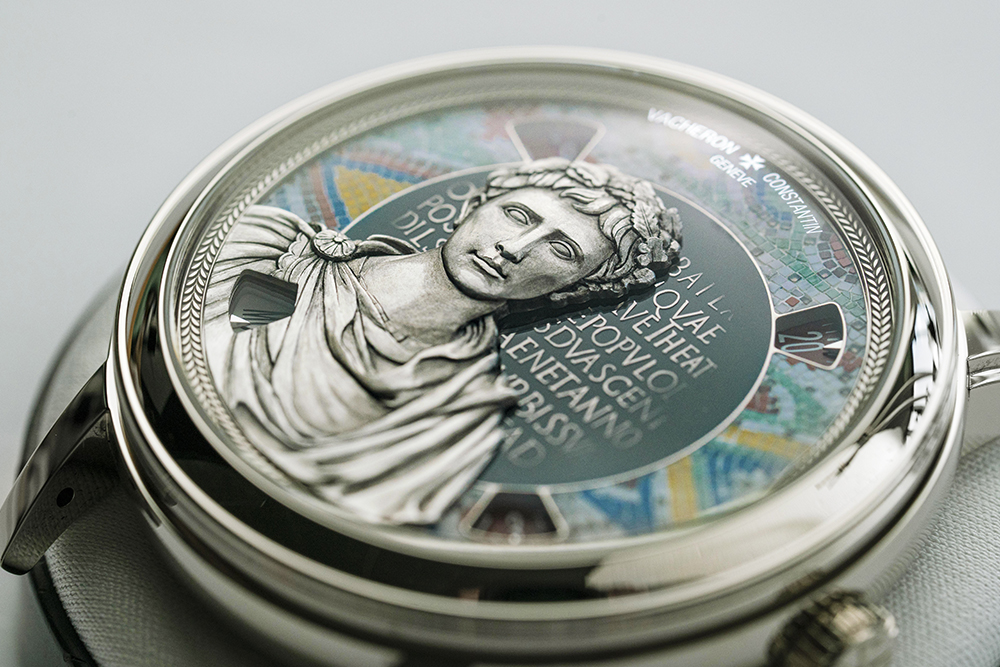
Finally, the Buste d’Auguste watch features a carved gold appliqué bust of Octavian Augustus, the adopted son of Caesar, here shown crowned with an oak wreath. Its dial is enamelled in blue-green, while its periphery is adorned with stone micro-mosaic of a famous fourth-century mosaic discovered in Lod, Israel. This was extremely difficult to execute as any error in the positioning and gluing of no less than seven different types of stones (660 in all) would have required re-enamelling the Grand Feu dial used as a base. For the outer frieze in white gold, featuring line engraving and patinated by firing in the kiln, another mosaic served as inspiration: the one depicting animals playing musical instruments, also from the fourth century and discovered in Sousse, a port city in eastern Tunisia. Last but not least, the Latin script engraved on the sapphire crystal are drawn from a dedication addressed to the Genius (divine protector) of the city of Rusicada (Skikda in Algeria). The text commemorates its installation by a local dignitary who opens his invocation with a tribute to the emperor.
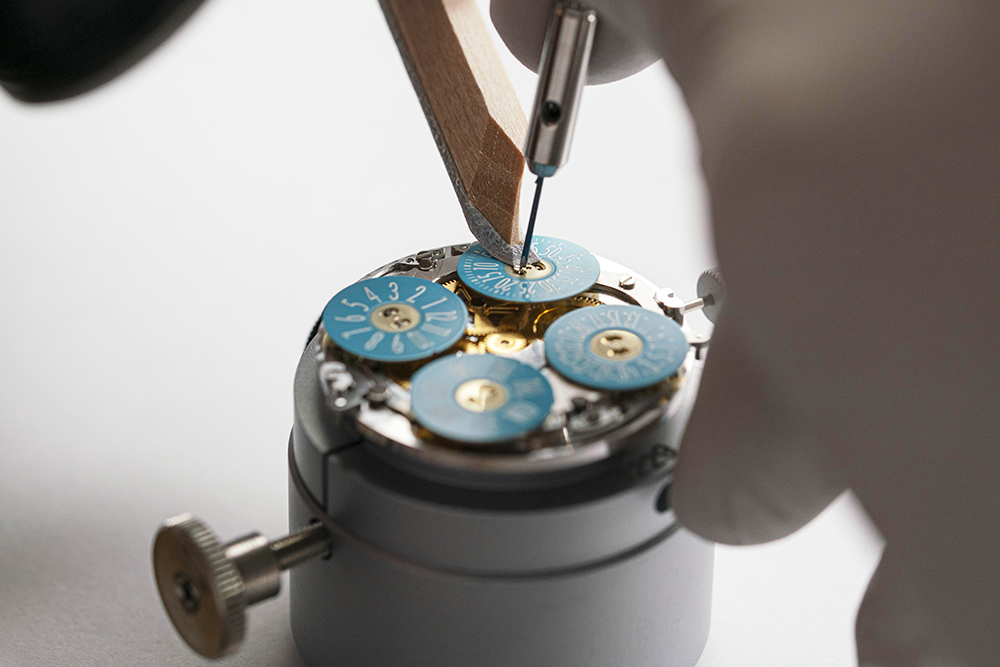
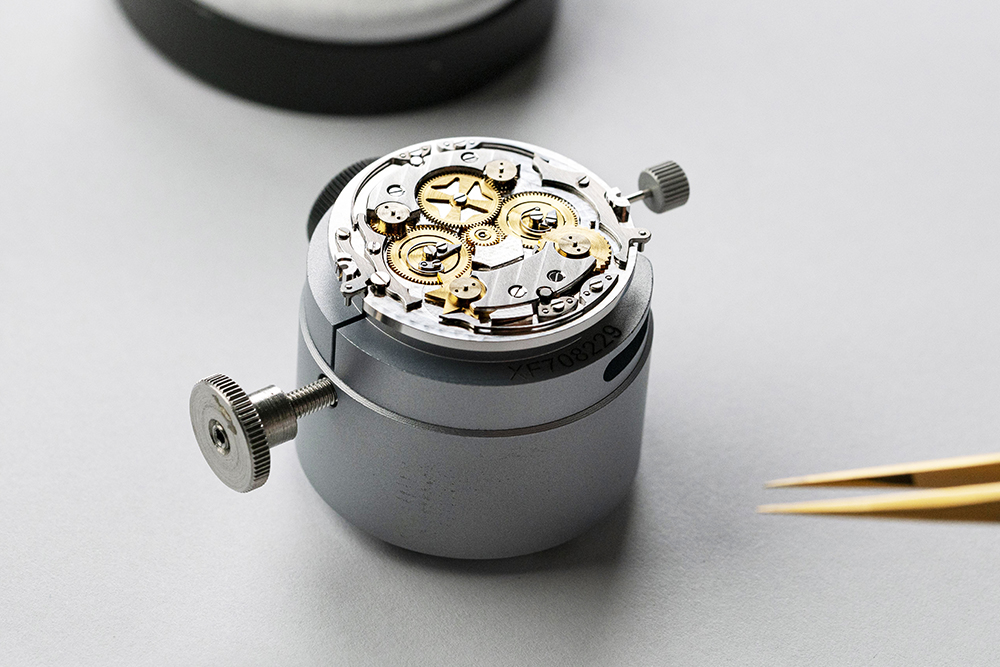
Because of all the artisanal skills lavished on these four Tribute To Great Civilizations models, the watchmakers turned to the 2460 G4/2 calibre, which makes without the use of hands to convey the time, and instead displays the hours, minutes, date, and day via four discreet apertures placed respectively at the four “corners” of the dial to offer the most unobstructed view of these incredible wearable works of art. The four apertures are the hours between 11 and 12 o’clock, minutes between 1 and 2 o’clock, days between 7 and 8 o’clock and the date between 4 and 5 o’clock.
This self-winding movement, entirely developed and crafted by the Maison, is indeed perfect for the types of dials made here, and has in fact been used extensively in the Métiers d’Art collection. This 237-part movement oscillates at a frequency of 4Hz (or 28,800 Vph), features 27 jewels, and is endowed with a 40-hour power reserve. Speaking of which.
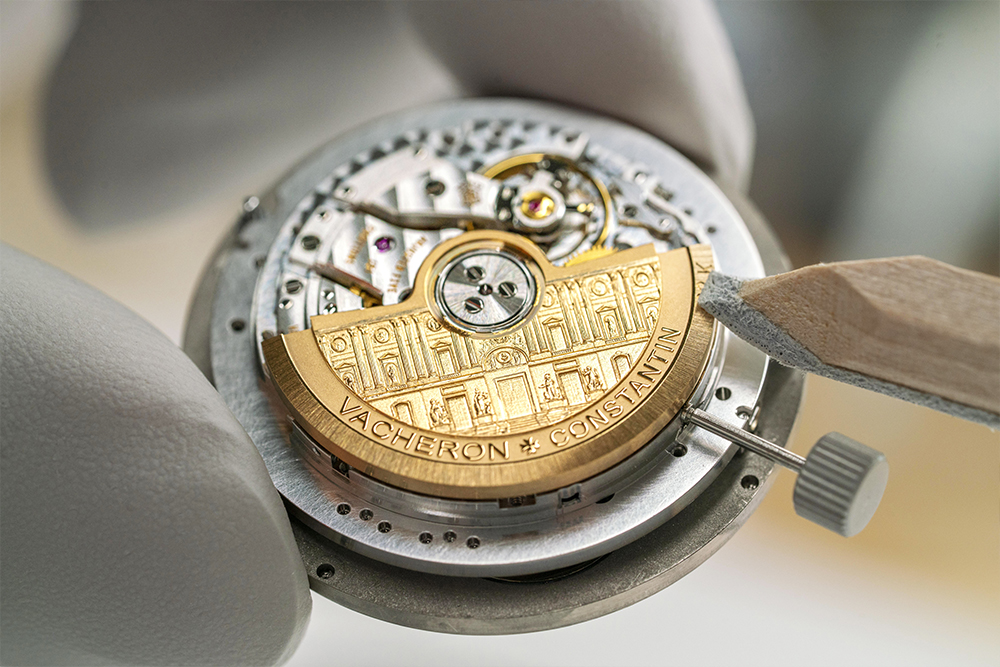
The oscillating rotor at the back of the movement has also received special attention. It features a depiction (based on an 18th century lithograph) of the east facade of the Louvre and its magnificent colonnade inspired by the work of Louis Le Vau and Claude Perrault, based on an 18th century etching. The matrix of the design was hand-sculpted and then used to stamp the twenty oscillating weights composing the series.
These being Vacheron Constantin timepieces each piece in the Métiers d’Art – Tribute to great civilizations is certified with the Hallmark of Geneva, and is an extremely limited series of only 5 timepieces per model.


